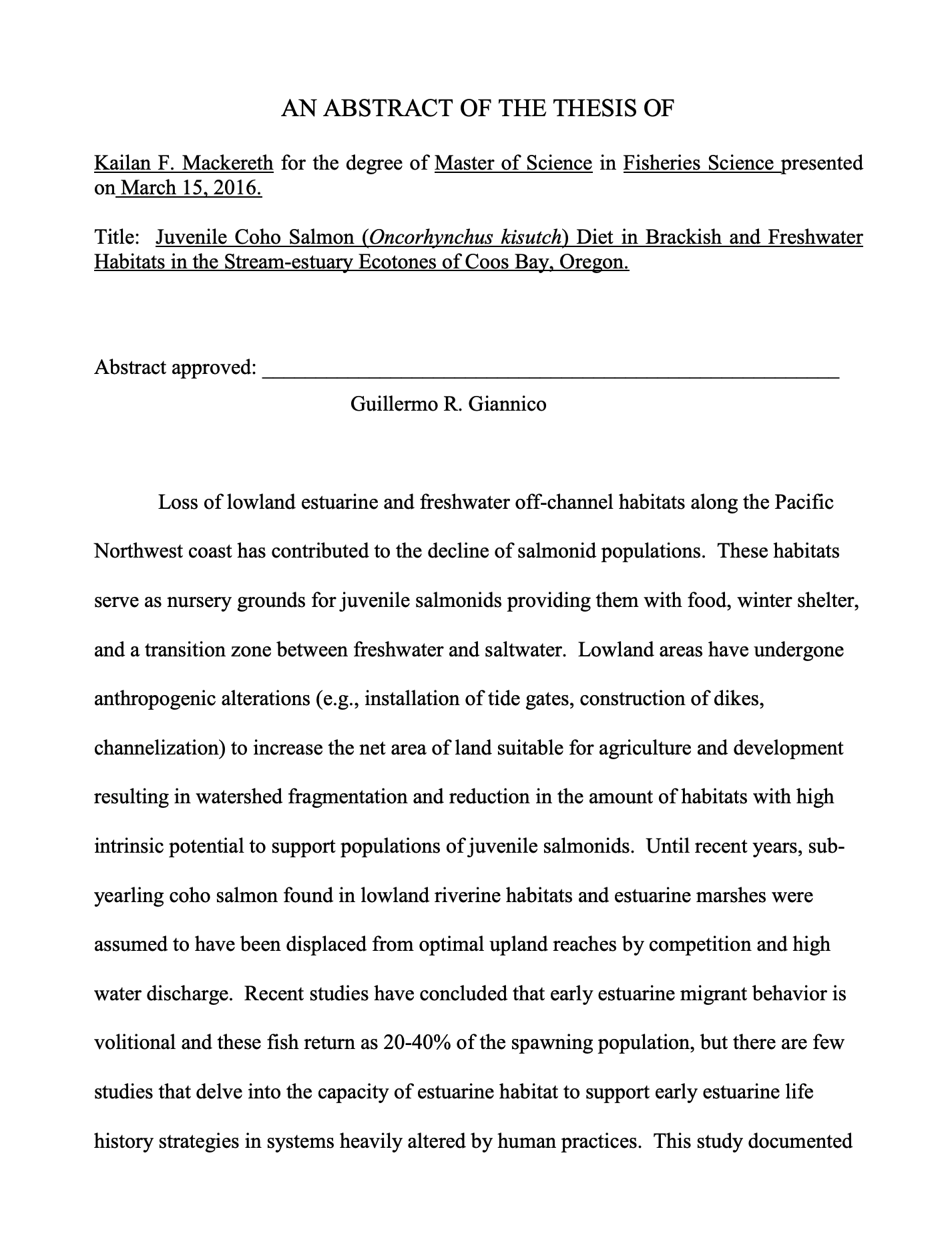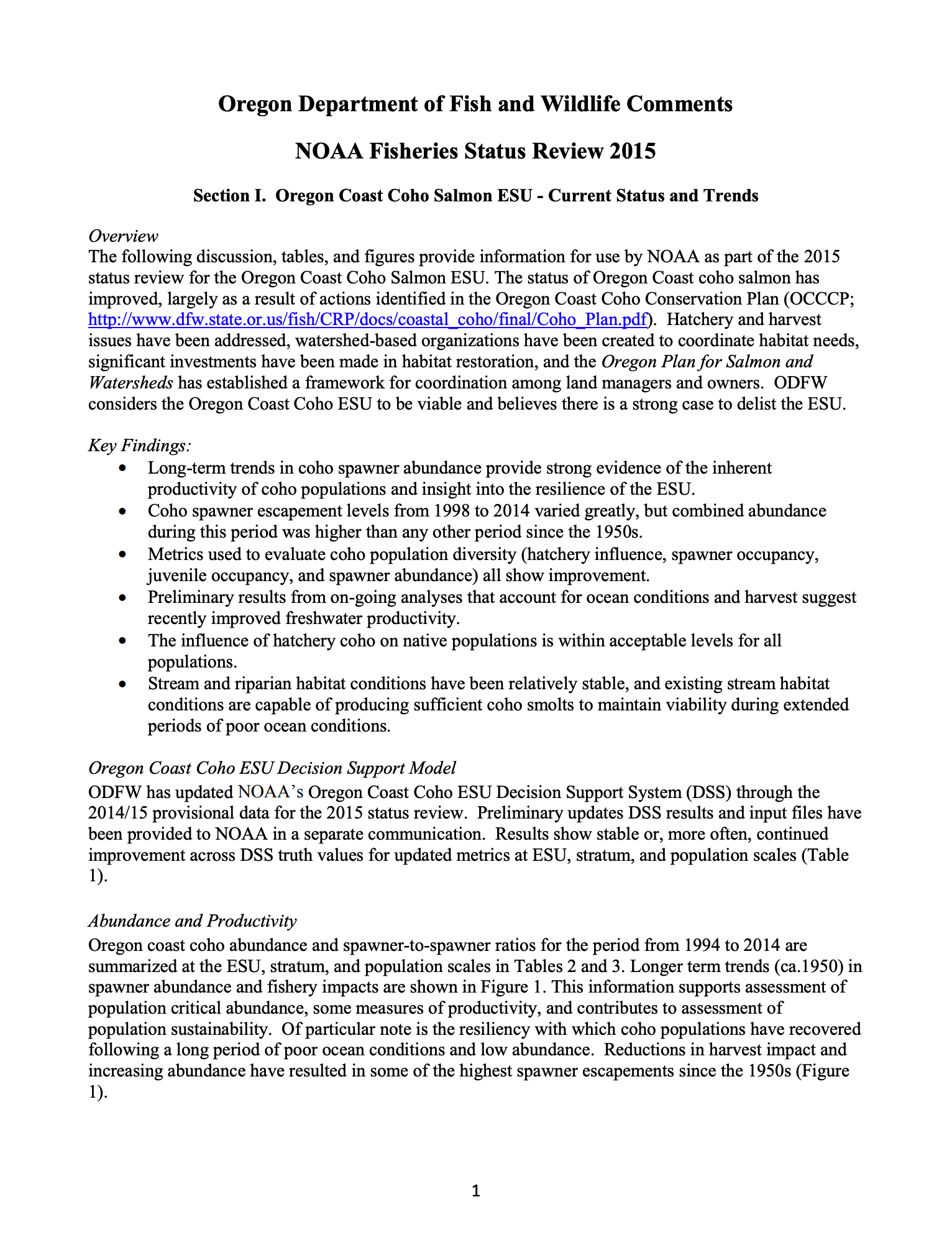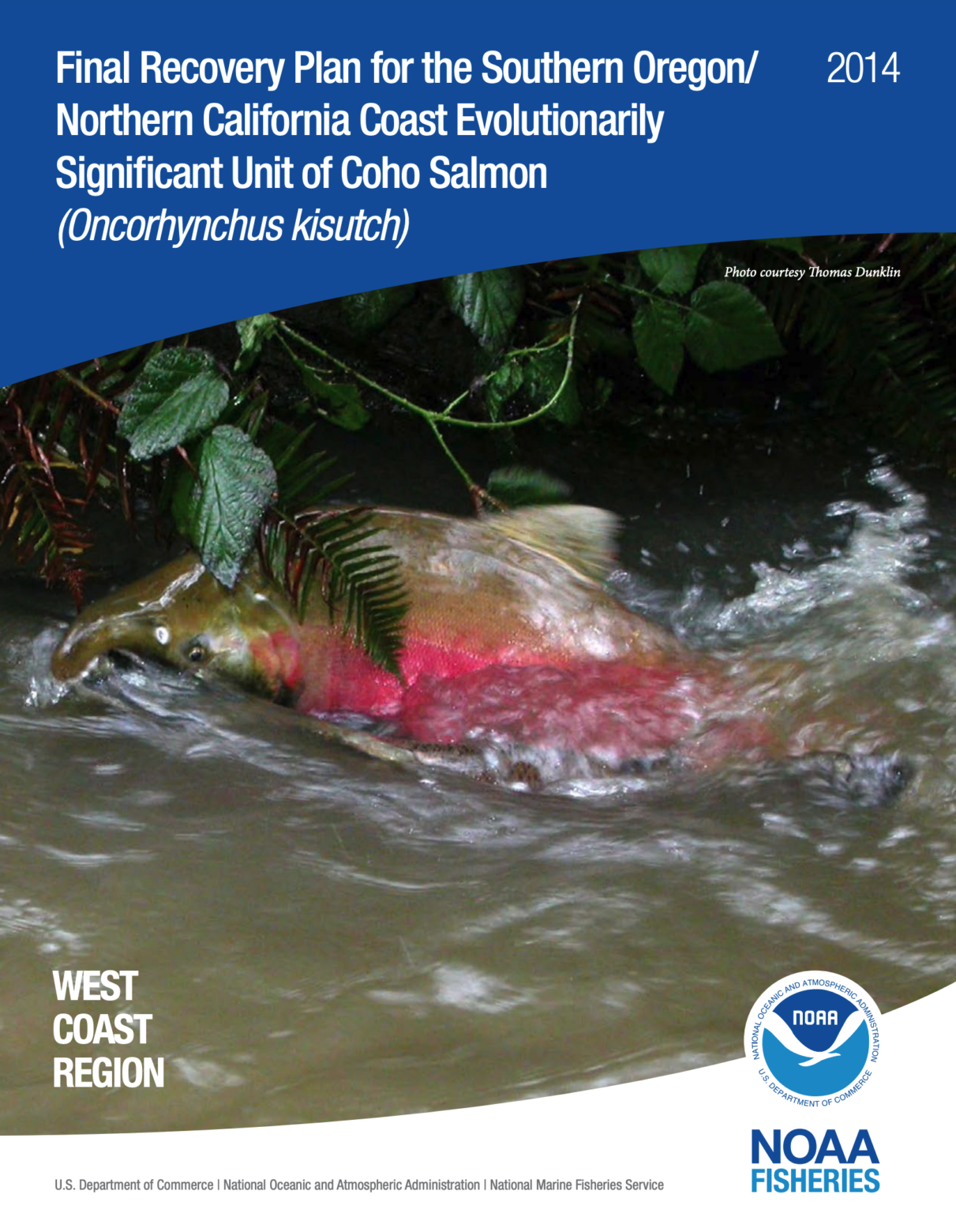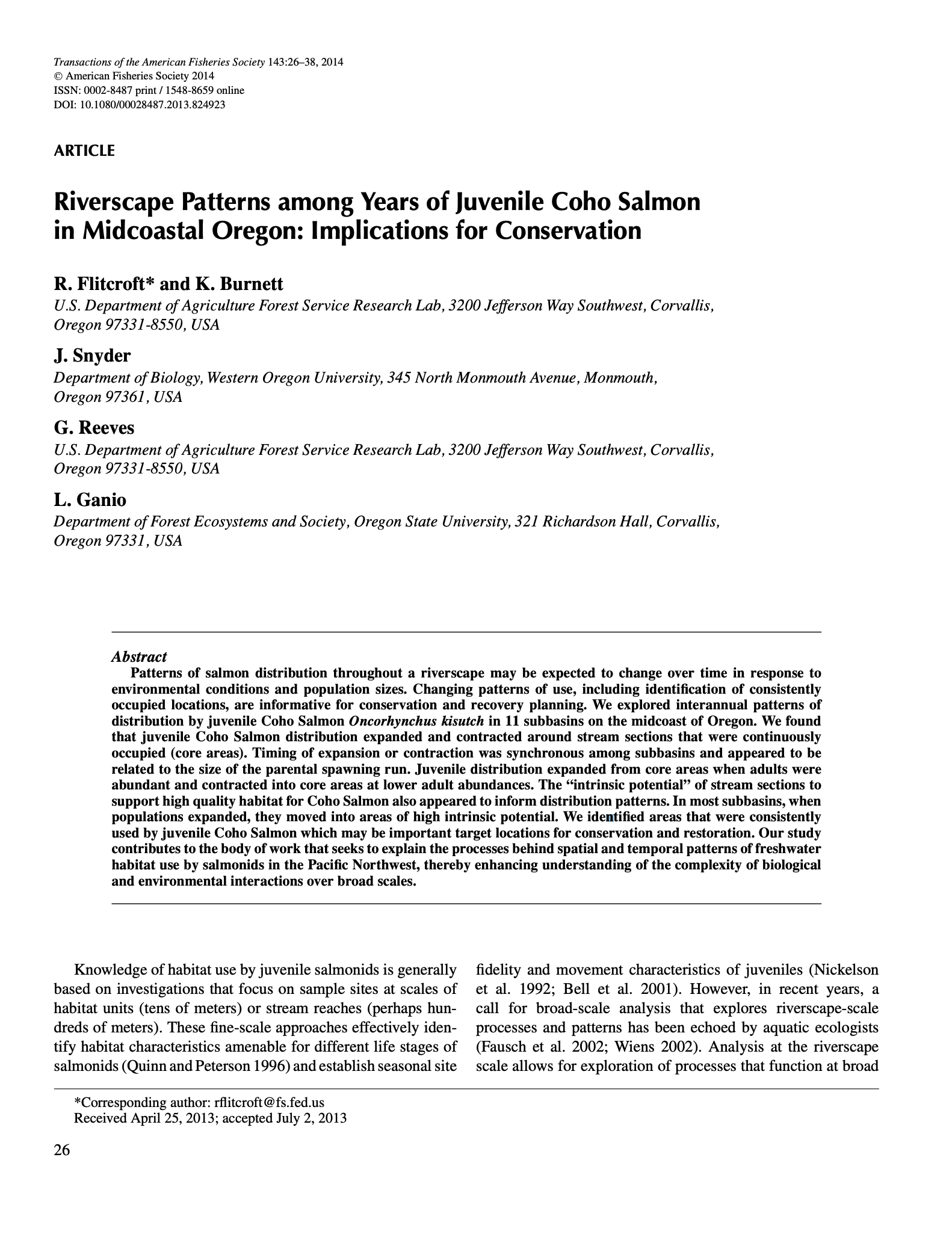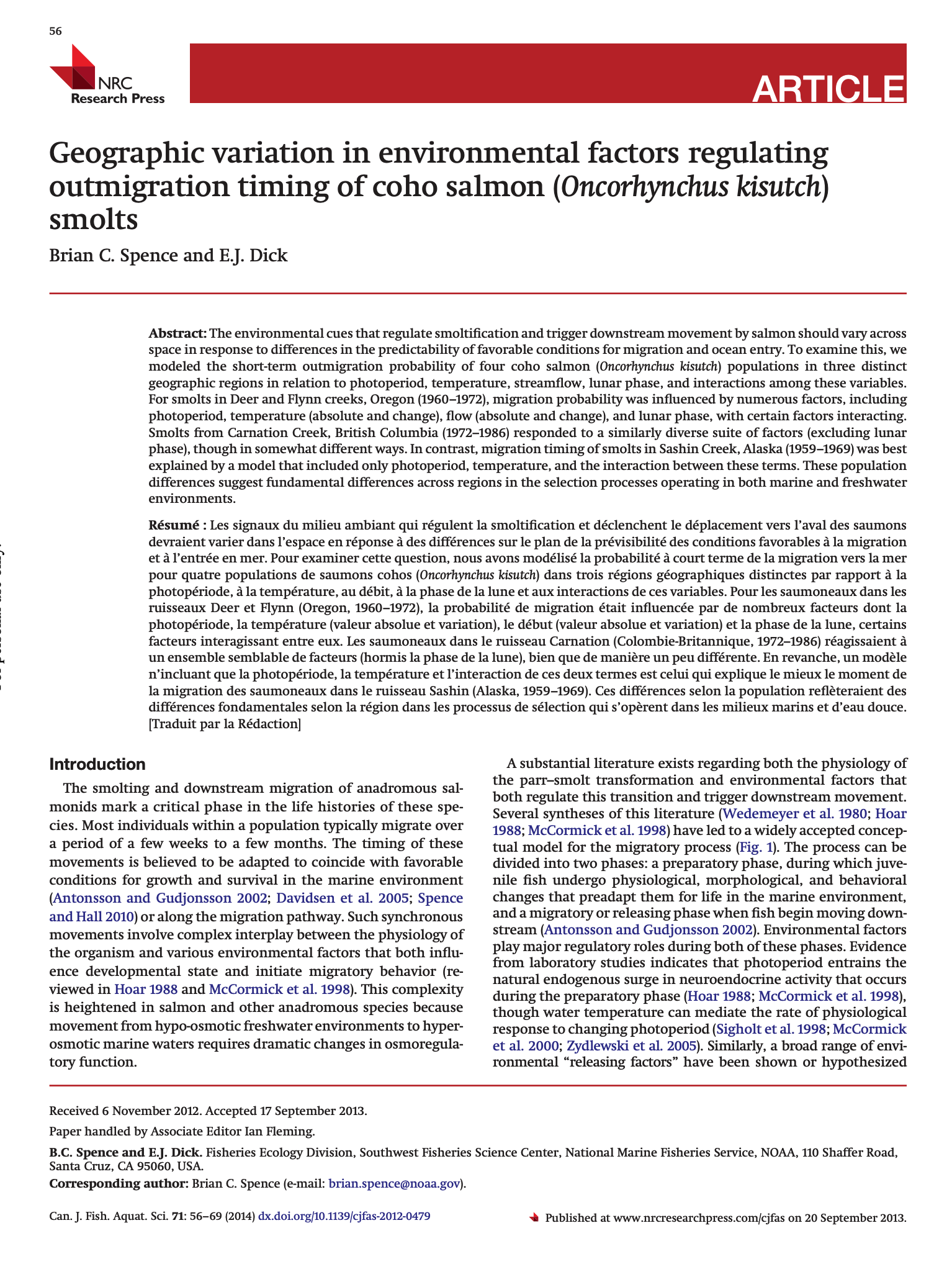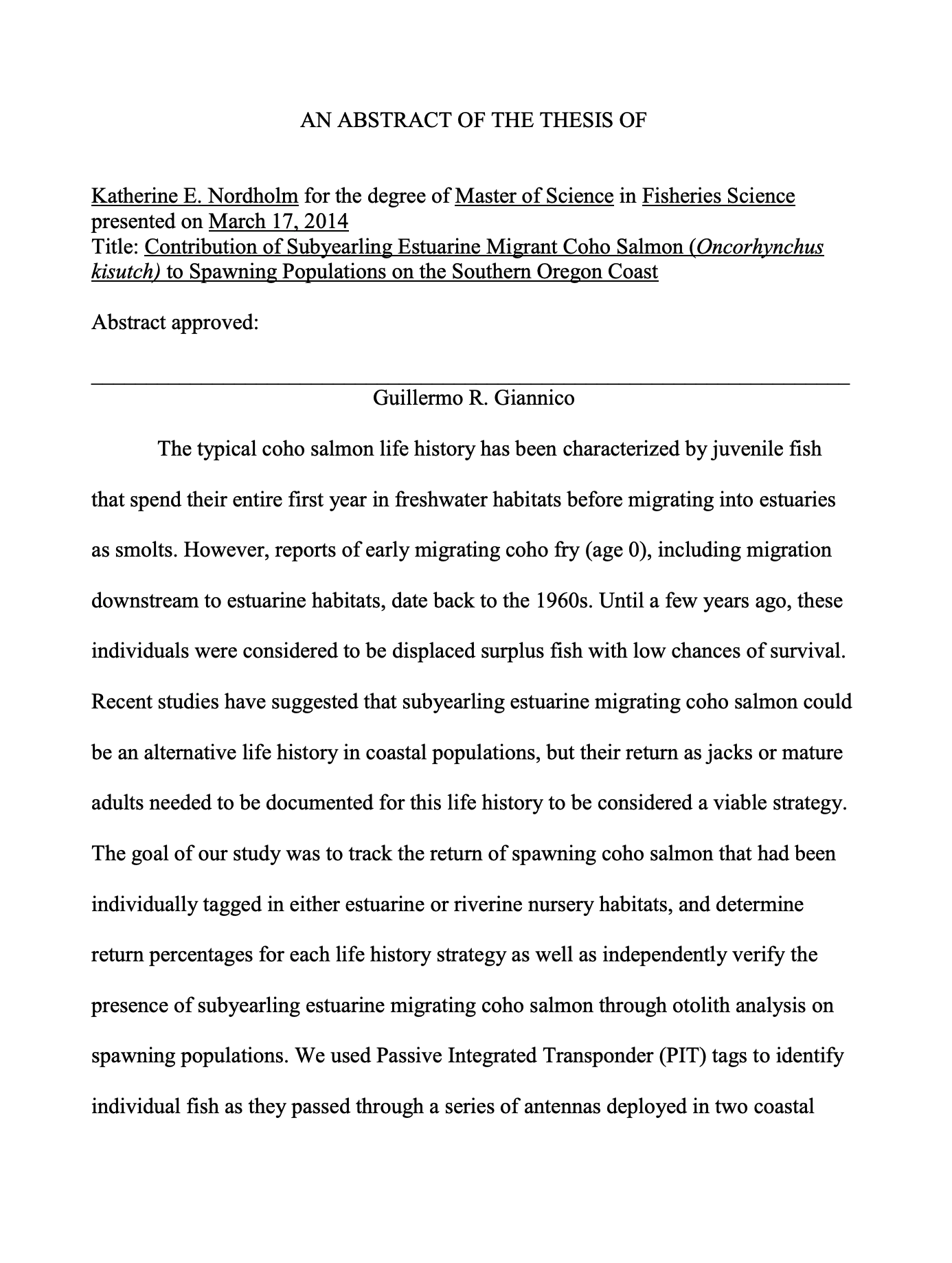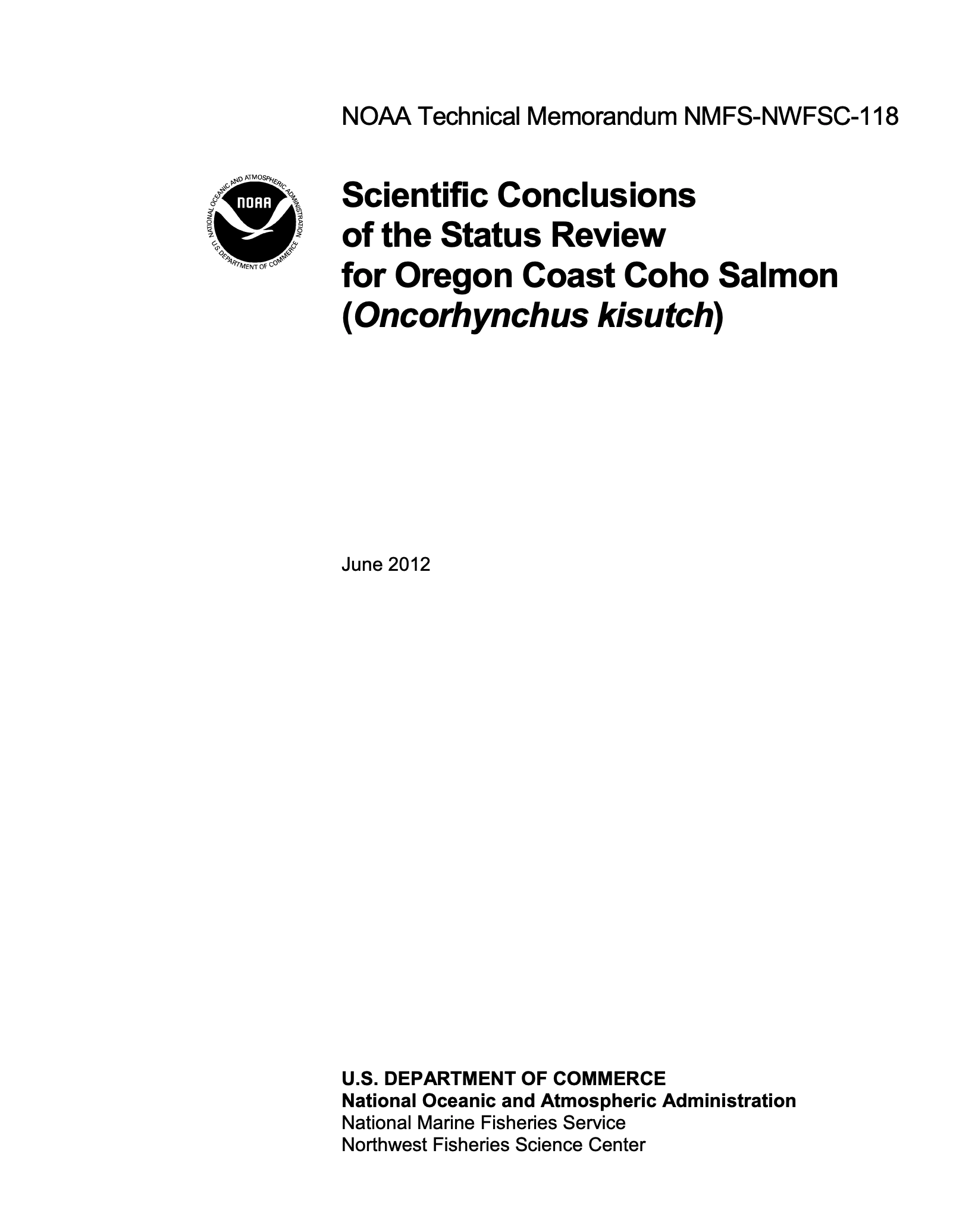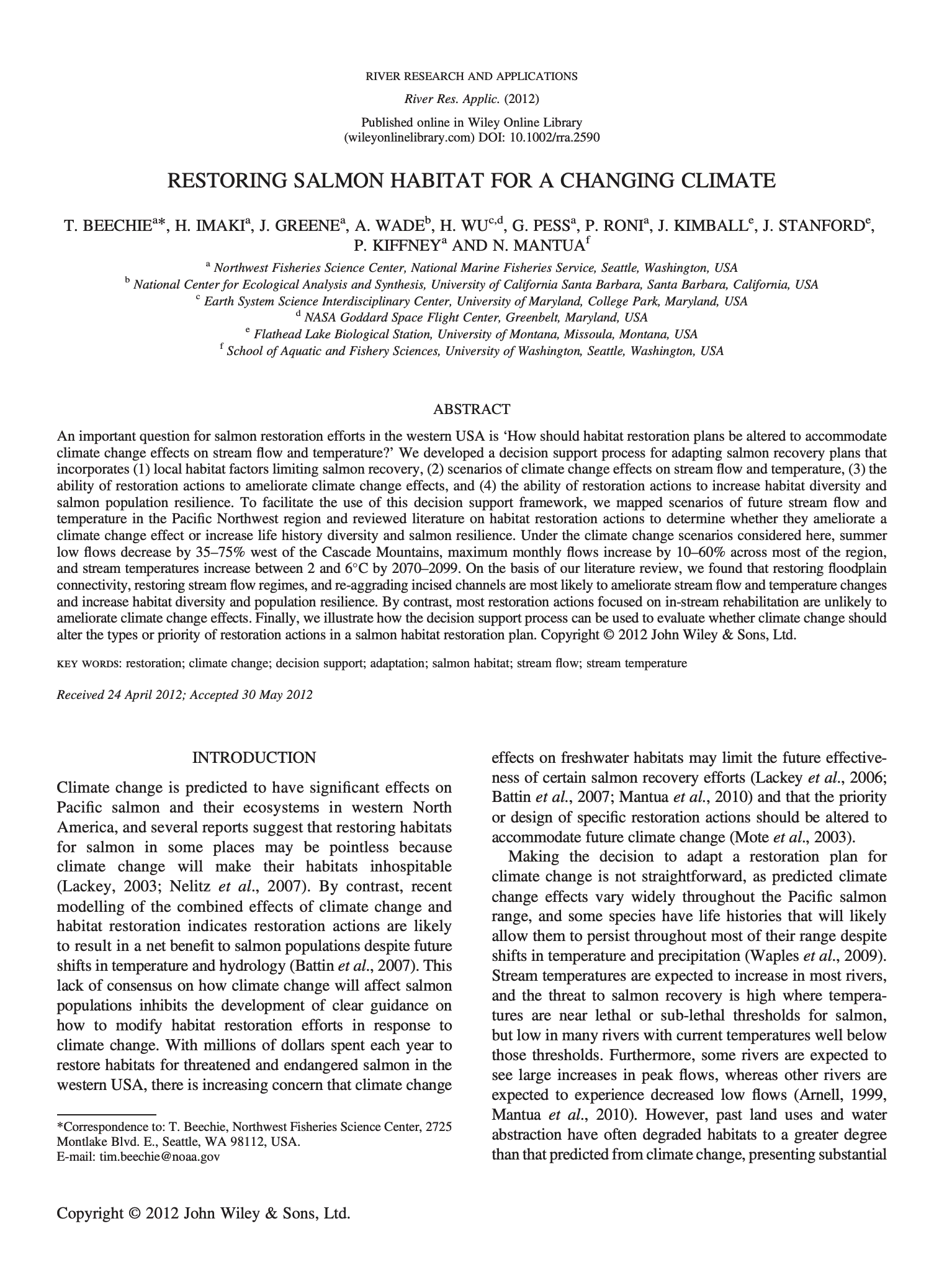Juvenile Coho Salmon Diet in Brackish Freshwater Habitats in the Stream Estuaries of Coos Bay, Oregon (Mackereth, 2016)
admin2022-06-28T13:50:31+00:00Loss of lowland estuarine and freshwater off-channel habitats along the Pacific Northwest coast has contributed to the decline of salmonid populations. These habitats serve as nursery grounds for juvenile salmonids providing them with food, winter shelter, and a transition zone between freshwater and saltwater. Lowland areas have undergone anthropogenic alterations (e.g., installation of tide gates, construction of dikes, channelization) to increase the net area of land suitable for agriculture and development resulting in watershed fragmentation and reduction in the amount of habitats with high intrinsic potential to support populations of juvenile salmonids. Until recent years, subyearling coho salmon found [...]

